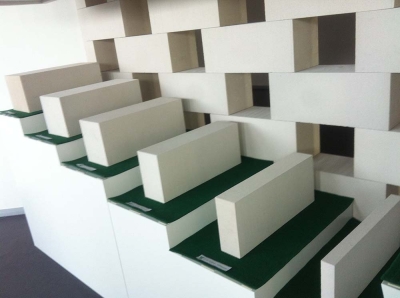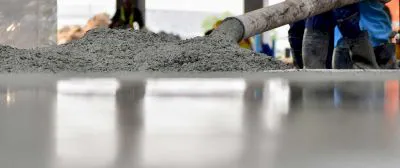Concrete blocks trade in India - Exporting Concrete blocks to India
- Anbar Asia
- Trade with India
- India's Construction Materials market
- Concrete blocks trade in India
- India
 ProfileRuby
ProfileRuby - India
 ProfileHandicrafts, Decorative Arts, Furniture
ProfileHandicrafts, Decorative Arts, Furniture - India
 ProfileSeeds And Seedlings, Cereals And Legumes, Medicinal Plants, Animal Feed, Industrial Crops, Handicrafts, Decorative Arts
ProfileSeeds And Seedlings, Cereals And Legumes, Medicinal Plants, Animal Feed, Industrial Crops, Handicrafts, Decorative Arts - India
 ProfileCeramic Tile
ProfileCeramic Tile - India
 ProfileCanned Foods, Pickles
ProfileCanned Foods, Pickles - India
 ProfileTurquoise, Ruby, Topaz, Emerald, Spinel, Pearl, Tanzanite
ProfileTurquoise, Ruby, Topaz, Emerald, Spinel, Pearl, Tanzanite - India
 ProfileGold, Zinc, Silver, Copper
ProfileGold, Zinc, Silver, Copper - India
 ProfileGroceries, Nuts, Spices
ProfileGroceries, Nuts, Spices - India
 ProfileSpices
ProfileSpices - India

 ProfileTea And Coffee, Nuts, Spices
ProfileTea And Coffee, Nuts, Spices - India
 ProfileRuby, Diamond, Topaz, Emerald
ProfileRuby, Diamond, Topaz, Emerald - India
 ProfileAntique, Carpet, Decorative Arts, Furniture
ProfileAntique, Carpet, Decorative Arts, Furniture - India
 ProfileGroceries, Canned Foods, Spices
ProfileGroceries, Canned Foods, Spices - India
 ProfileSpices
ProfileSpices - India
 ProfileDiamond
ProfileDiamond - India
 ProfileSpices, Vegetables, Fruit
ProfileSpices, Vegetables, Fruit - India
 ProfileCeramic Tile, Nuts
ProfileCeramic Tile, Nuts - India
 ProfileHerbal Distillate
ProfileHerbal Distillate - India
 ProfileGold, Aluminum, Copper
ProfileGold, Aluminum, Copper - India
 ProfileAmmonia, Chlorine
ProfileAmmonia, Chlorine - India
 ProfileCement, Ceramic Tile, Concrete Blocks
ProfileCement, Ceramic Tile, Concrete Blocks - India
 ProfilePolypropylene
ProfilePolypropylene  hhj14 months agoIndia
hhj14 months agoIndia ProfileBitumen
ProfileBitumen- India
 ProfileGranite, Marble, Travertine, Quartzite, Sandstone
ProfileGranite, Marble, Travertine, Quartzite, Sandstone - India
 Profile
Profile



 meera katariya2 weeks ago
meera katariya2 weeks ago ProfileRuby
ProfileRuby Abdul Wahab1 months ago
Abdul Wahab1 months ago ProfileHandicrafts, Decorative Arts, Furniture
ProfileHandicrafts, Decorative Arts, Furniture Ashish Sheel From Sheel Global Private Limited1 months ago
Ashish Sheel From Sheel Global Private Limited1 months ago ProfileSeeds And Seedlings, Cereals And Legumes, Medicinal Plants, Animal Feed, Industrial Crops, Handicrafts, Decorative Arts
ProfileSeeds And Seedlings, Cereals And Legumes, Medicinal Plants, Animal Feed, Industrial Crops, Handicrafts, Decorative Arts ATLAS INTERNATIONAL EXIM3 months ago
ATLAS INTERNATIONAL EXIM3 months ago ProfileCeramic Tile
ProfileCeramic Tile Visgo Enterprises4 months ago
Visgo Enterprises4 months ago ProfileCanned Foods, Pickles
ProfileCanned Foods, Pickles Karim KIORA AMOREZ4 months ago
Karim KIORA AMOREZ4 months ago ProfileTurquoise, Ruby, Topaz, Emerald, Spinel, Pearl, Tanzanite
ProfileTurquoise, Ruby, Topaz, Emerald, Spinel, Pearl, Tanzanite Sandy5 months ago
Sandy5 months ago ProfileGold, Zinc, Silver, Copper
ProfileGold, Zinc, Silver, Copper Srivishwaa Vyapar5 months ago
Srivishwaa Vyapar5 months ago ProfileGroceries, Nuts, Spices
ProfileGroceries, Nuts, Spices jigar patel8 months ago
jigar patel8 months ago ProfileSpices
ProfileSpices BISWAJITH KIZHAKKETHARA9 months ago
BISWAJITH KIZHAKKETHARA9 months ago
 ProfileTea And Coffee, Nuts, Spices
ProfileTea And Coffee, Nuts, Spices NATURAL GEMS INTERNATIONAL10 months ago
NATURAL GEMS INTERNATIONAL10 months ago ProfileRuby, Diamond, Topaz, Emerald
ProfileRuby, Diamond, Topaz, Emerald Gemstone10 months ago
Gemstone10 months ago ProfileAntique, Carpet, Decorative Arts, Furniture
ProfileAntique, Carpet, Decorative Arts, Furniture KRUPA EXPORTER10 months ago
KRUPA EXPORTER10 months ago ProfileGroceries, Canned Foods, Spices
ProfileGroceries, Canned Foods, Spices ALISONS GENERAL TRADING LLP11 months ago
ALISONS GENERAL TRADING LLP11 months ago ProfileSpices
ProfileSpices FAIZAN ZAVERI11 months ago
FAIZAN ZAVERI11 months ago ProfileDiamond
ProfileDiamond Medsin11 months ago
Medsin11 months ago ProfileSpices, Vegetables, Fruit
ProfileSpices, Vegetables, Fruit DHAVAL FROM Q LAND AGRI WORLD11 months ago
DHAVAL FROM Q LAND AGRI WORLD11 months ago ProfileCeramic Tile, Nuts
ProfileCeramic Tile, Nuts Soha chTterjee12 months ago
Soha chTterjee12 months ago ProfileHerbal Distillate
ProfileHerbal Distillate Shree Fire Services13 months ago
Shree Fire Services13 months ago ProfileGold, Aluminum, Copper
ProfileGold, Aluminum, Copper Steelmangases pvt ltd13 months ago
Steelmangases pvt ltd13 months ago ProfileAmmonia, Chlorine
ProfileAmmonia, Chlorine Omega Graphite14 months ago
Omega Graphite14 months ago ProfileCement, Ceramic Tile, Concrete Blocks
ProfileCement, Ceramic Tile, Concrete Blocks Rakesh Kumar14 months ago
Rakesh Kumar14 months ago ProfilePolypropylene
ProfilePolypropylene hhj14 months ago
hhj14 months ago ProfileBitumen
ProfileBitumen Sarvesh K22 months ago
Sarvesh K22 months ago ProfileGranite, Marble, Travertine, Quartzite, Sandstone
ProfileGranite, Marble, Travertine, Quartzite, Sandstone Mir murtuza hussain23 months ago
Mir murtuza hussain23 months ago Profile
Profile



















